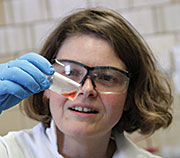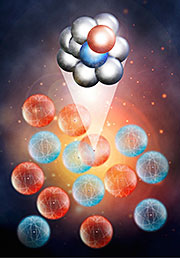Anja Mudring is new to the Ames Laboratory as a full-time scientist, but her ties to the Lab date back to 1997 when she first came for a 2-week fellowship trip as a graduate student.
“I read in my chemistry text book about molten salts and ionic liquids and I thought it was so interesting. And a name kept popping up: John Corbett, here at Ames Laboratory. So, I wrote to John and he invited me to come here to Ames for my fellowship trip.”
Mudring returned as a postdoctoral research associate from 2001-2003, and, even after she returned to Germany to start her own research group, she continued to visit Ames Laboratory for about a month each year.
“Always in the winter. I’ve always liked the quietness in Ames in the winter. The summer feels too hot to me, so I vowed to always only come in winter.”
Full Story
Feature
Like dancers swirling on the dance floor with bystanders looking on, protons and neutrons that have briefly paired up in the nucleus have higher-average momentum, leaving less for non-paired nucleons. Using data from nuclear physics experiments carried out at the Department of Energy's Thomas Jefferson National Accelerator Facility, researchers have now shown for the first time that this phenomenon exists in nuclei heavier than carbon, including aluminum, iron and lead.
The phenomenon also surprisingly allows a greater fraction of the protons than neutrons to have high momentum in these relatively neutron-rich nuclei, which is contrary to long-accepted theories of the nucleus and has implications for ultra-cold atomic gas systems and neutron stars. The results were published online by the journal Science.
The research builds on earlier work featured in Science that found that protons and neutrons in light nuclei pair up briefly in the nucleus, a phenomenon called a short-range correlation. Nucleons prefer pairing up with nucleons of a different type (proton preferred neutrons to other protons) by 20 to 1, and nucleons involved in a short-range correlation carry higher momentum than unpaired ones.
Full Story
See also…
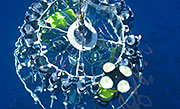 Using ocean observations and a large suite of climate models, scientists at DOE's Lawrence Livermore National Laboratory have found that long-term salinity changes have a stronger influence on regional sea level changes than previously thought.
Using ocean observations and a large suite of climate models, scientists at DOE's Lawrence Livermore National Laboratory have found that long-term salinity changes have a stronger influence on regional sea level changes than previously thought.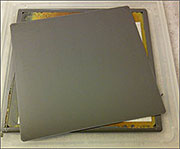 A faster, cheaper way to manufacture silicon solar cells, partially funded by the Energy Department and fine-tuned at its National Renewable Energy Laboratory (NREL), has won a coveted R&D 100 award as a top technology innovation.
A faster, cheaper way to manufacture silicon solar cells, partially funded by the Energy Department and fine-tuned at its National Renewable Energy Laboratory (NREL), has won a coveted R&D 100 award as a top technology innovation.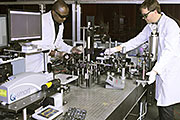 DOE's National Energy Technology Laboratory is attracting private industry attention and winning innovation awards for harnessing the power of lasers to monitor the safe and permanent underground storage of CO2 resulting from fossil fuel combustion in power plants.
DOE's National Energy Technology Laboratory is attracting private industry attention and winning innovation awards for harnessing the power of lasers to monitor the safe and permanent underground storage of CO2 resulting from fossil fuel combustion in power plants.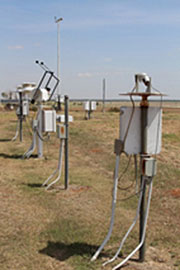 Understanding climate change begins with measuring important energy factors affecting the Earth. One of these factors is the amount of sunlight reflected by the Earth's surface. The surface's reflectivity or surface albedo—a measure of how mirror-like the Earth's surface is—greatly influences the amount of sunlight coming into and leaving the atmosphere. Researchers at DOE's Pacific Northwest National Laboratory developed a new way to measure surface albedo by capturing sunlight bounced back to Earth by the clouds. With scientists from the National Oceanic and Atmospheric Administration and University of Colorado, the researchers showed how the method has potential for capturing the surface albedo.
Understanding climate change begins with measuring important energy factors affecting the Earth. One of these factors is the amount of sunlight reflected by the Earth's surface. The surface's reflectivity or surface albedo—a measure of how mirror-like the Earth's surface is—greatly influences the amount of sunlight coming into and leaving the atmosphere. Researchers at DOE's Pacific Northwest National Laboratory developed a new way to measure surface albedo by capturing sunlight bounced back to Earth by the clouds. With scientists from the National Oceanic and Atmospheric Administration and University of Colorado, the researchers showed how the method has potential for capturing the surface albedo. 